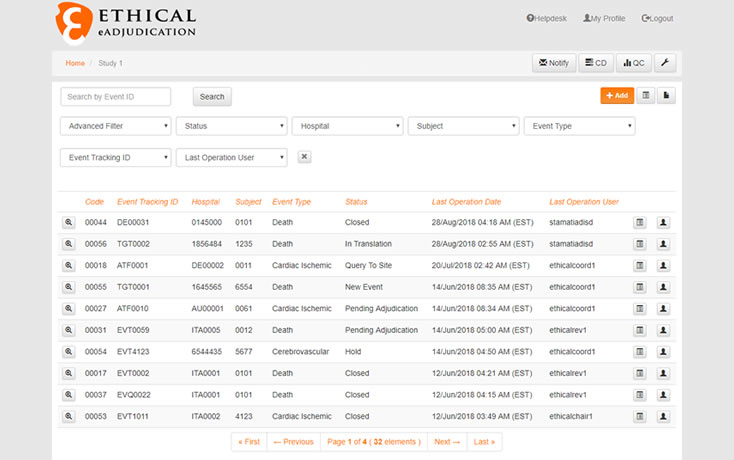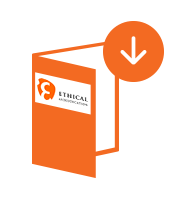Clinical Events Committees (CEC) are routinely called upon to adjudicate complex endpoints in clinical trials. In the past, Adjudication was often based on paper processes where the event documentation packages were printed and delivered to the Committee Members by mail together with an Adjudication form which was to be completed and returned by the same means. This made Adjudication a time-consuming activity prone to errors and repetitions.
Adjudication Software can improve efficiency & quality...
Software solutions have revolutionized many professional areas and in the case of clinical endpoints Adjudication a well-thought software solution can play a fundamental role in helping all stakeholders manage the full process efficiently and with high quality.To begin with, a software solution can provide the CEC Members with accurate, clean and complete data as soon as these become available. But a well-thought software solution can do much more: it can allow to directly integrate different data sources into the event packages and assign different roles to individuals in order to support a fully transparent and documented operating procedure. In addition, different approaches for to handling lack of consensus can be defined and implemented in the software, enabling the Adjudication Committee Chairperson to supervise the process and resolve disagreements (e.g. by calling for a Consensus Meeting when appropriate).
In order to guarantee quality and compliance when using software solutions, special attention must be given to handling and tracking changes both in input data (enabling the user to easily view and understand the impact of the change) and in output data (results of the review process).
...with these 6 “must have” peculiarities
1. User-Friendly and Streamlined
Remember that the Committee Members are the heavier users of an adjudication software and are responsible for judging key clinical endpoints on which depends the success of the study. However, being independent users, they are not part of the organization that has selected the tool. Any negative feeling they might develop about the software could completely offset its advantages, sometimes forcing sponsors to revert to a paper-based process.Key Concept
Committee Members are usually busy people not available to attend long training sessions and unwilling to waste time dealing with complex systems.
2. Easy & Fast to Setup & Configure
The Adjudication Charter is the main source for designing the System User Requirements, Adjudication Forms, Workflows and Integrations Interfaces. But the Charter final versions are usually available only very close to the start date of the Study. It is fundamental that the software can be completely configured, tested and validated in the limited residual time between charter completion and study start.Key Concept
Software setup, Charter configuration, and GMP Validation should require weeks and not months.
3. Adaptable to Any Data Source Integration
Events Packages are built by merging together data, images, and documents coming from other external systems or Services. EDC, AE databases, CTMS, Central Labs, ECG and Imaging System are usually the data providers for the Endpoint’s documentation.Key Concept
Adjudication Software must work as Hubs capable of processing information coming from heterogeneous external sources. Not simply “internal modules” of an existing system like EDC, CTMS, AE, etc.
4. Cloud-Based & Responsive on Mobile Devices
In most cases Adjudication users such as Committee Members, Chairpersons and Study Coordinators are not working inside the same network and it is commonly impossible or too expensive to impose specific devices and software configurations to them.Key Concept
System users connect from their own workstations: heterogeneous in term of geography, connectivity, devices, and software configuration. They must be able to perform all tasks through a web browser and if needed using mobile devices.
5. Flexible to Reflect Adjudication Charter Changes
Software should offer enough flexibility to quickly adapt to amendments in the Adjudication Charter, changes in data sources or workflows without requiring new deployment of software users’ workstations.Key Concept
Adjudication Charters often change during the trial lifetime: software must be able to adapt.
6. GXP / GDPR Compliant and Q.A. Documented
Last but not least the Adjudication software must be designed and managed according to a documented Quality Assurance System. The solution vendor must provide customers with GXP Validation Documentation, URS support and a Testing Environment. The Vendor must be ready to support Sponsor’s Audits to development and hosting (if present) facilities.Key Concept
Quality Assurance and GXP validation for Adjudication software is an obligation. Often costs related to Q.A. activities weight on the Adjudication budget more than the software Licensing.
DOWNLOAD NOW THE ENDPOINT ADJUDICATION HANDBOOK
The Complete Manual / Reference Book with all the topics related to the Independent Endpoint Adjudication Committees Management




